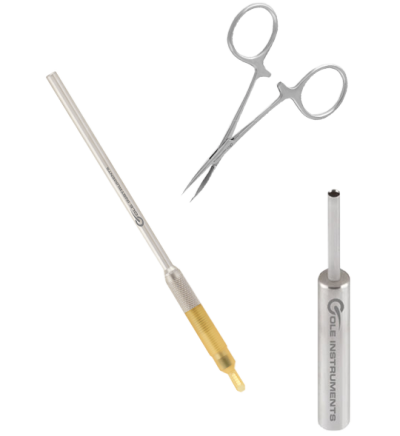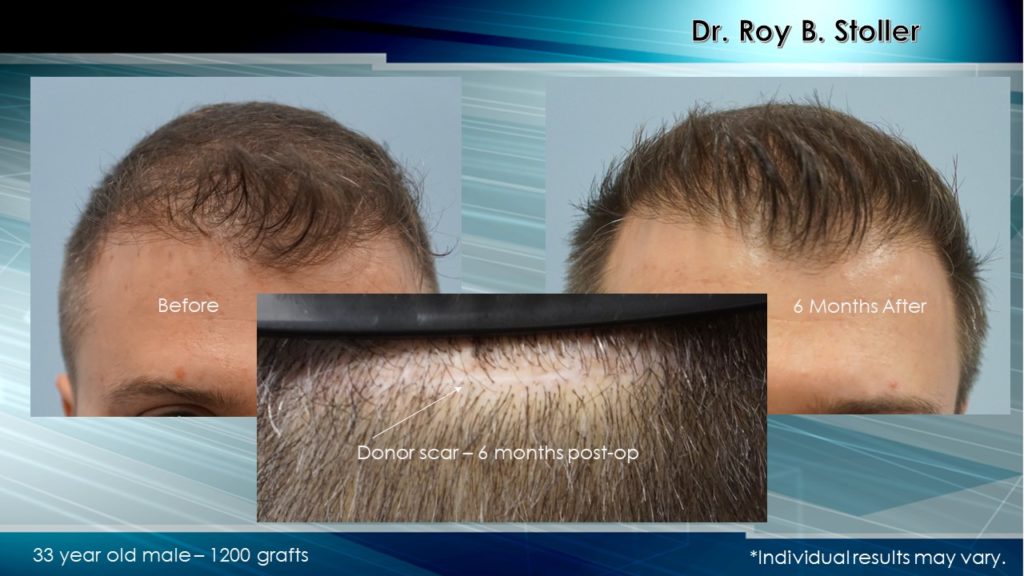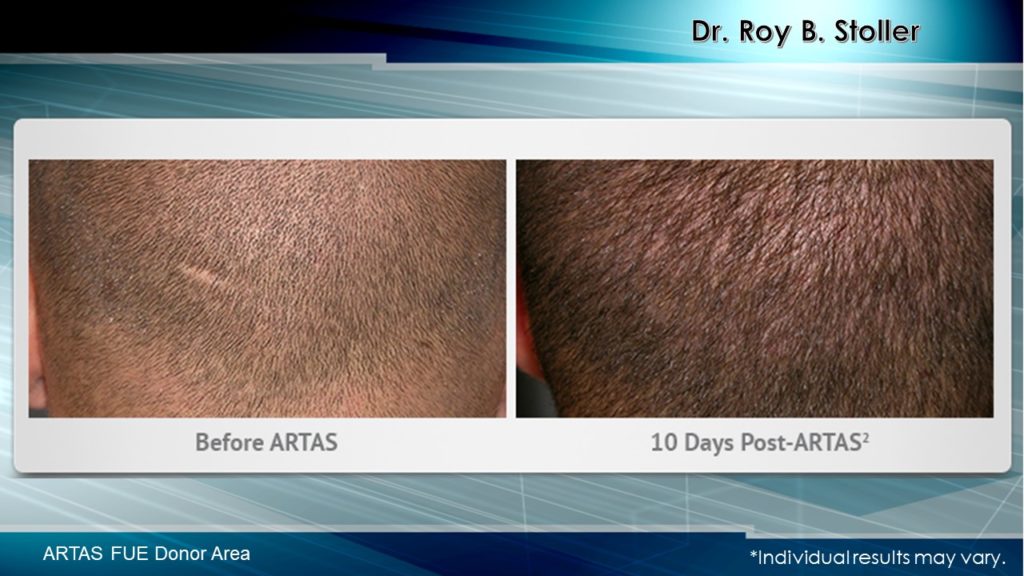Follicular Unit Extraction Hair Transplant
FUE HAIR TRANSPLANT
FUE Transplant
Process In New York City
Unlike donor strip harvesting, that removes a large linear strip of hair bearing tissue from the back of the scalp, FUE hair transplant in our mid-town New York City offices entails the Dr. Stoller extracting individual hair follicles. The incision in FUE hair transplantation is less than 1mm and leaves a tiny dot scar that is virtually invisible. With FUE patients can shave or cut their hair short in the back and their is no visible scar
The FUE Transplant Process
During an FUE procedure, follicular units are extracted from primarily the back and side of your head, although sometimes from other regions of a patient’s body.
At surgery, Dr. Stoller removes hairs one by one, spaced out every other of more. The surgery is done in this matter because hair does not grow back in donor sites, however it is easily camouflage by existing hair.*
Grafts extracted via FUE are much more sensitive than that of FUT, as the extraction technique leaves much less protective tissue around the hair follicles. Having performed over 5,000 hair transplants, Dr. Stoller knows how to handle the grafts so they will properly grow in the donor sites.*
After placing the graft in a holding solution and the health is determined to be the best possible, Dr. Stoller begins the implants; precisely pinpointing where the new hairs will be transplanted and how to create the dense hair and shape that you are seeking.*
In one sitting Dr. Stoller may extract over 2000 units for large areas such as the crown or as little as 500 for eyebrow hair transplants.*Individual results may vary.





Our value
What Happens After Surgery
Little Pain
With 25 years of in-hospital surgical experience, Dr. Stoller utilizes the safest and most efficient anesthesia and methods for pain control both during the procedure and afterwards.
Transportation
A policy of Dr. Stoller is to have a chaperone pick you up after surgery make sure to have a friend or family member come with you to assure you return home or to your hotel safely.
Post Meds
The last thing we want is you waiting at the drugstore after surgery. You’ll have everything you need packed and ready in our post care bag.
Follow Up
As part of Hair Prescription Plan – we perform you first shampoo therapy to soothe, nourish the scalp and encourage the growth of newly implanted hair. Plus, we want to monitor your hair growth to achieve maximum results.
Post Care
Follow our simple recovery guide, complete with hair washing, hair care and diet tips, soon you’ll be feeling just fine*.
Hair Growth
Hair growth normally begins 9 to 12 weeks after surgery and will then continue to grow the rest of your life like the surround donor hair.
